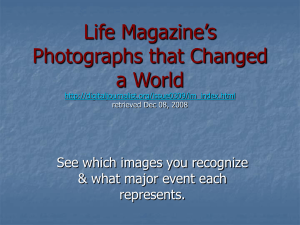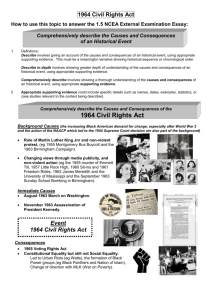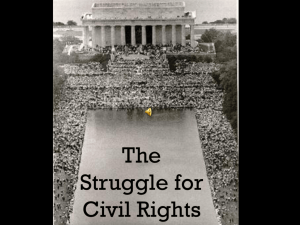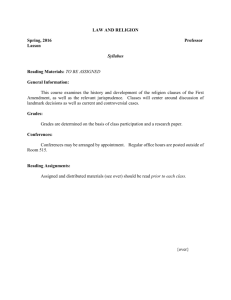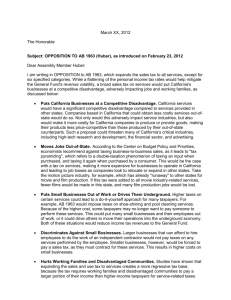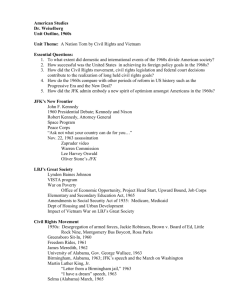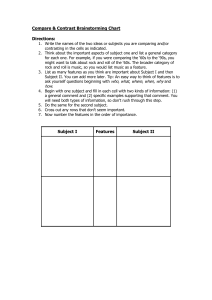1963Music - Deacon Street
advertisement
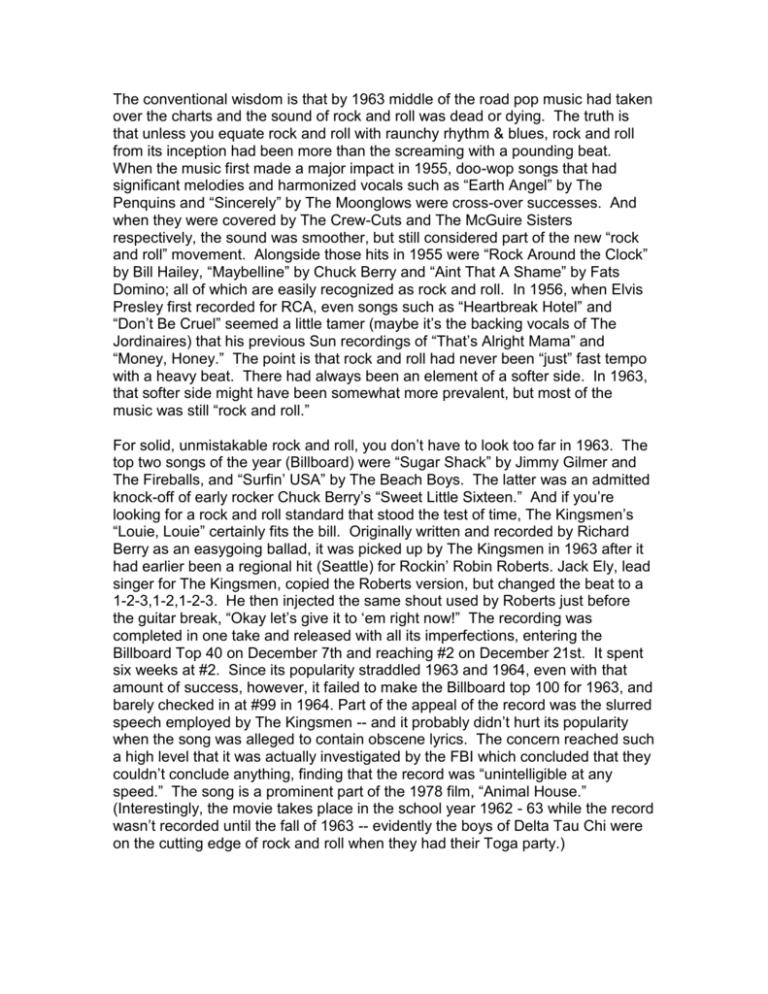
The conventional wisdom is that by 1963 middle of the road pop music had taken over the charts and the sound of rock and roll was dead or dying. The truth is that unless you equate rock and roll with raunchy rhythm & blues, rock and roll from its inception had been more than the screaming with a pounding beat. When the music first made a major impact in 1955, doo-wop songs that had significant melodies and harmonized vocals such as “Earth Angel” by The Penquins and “Sincerely” by The Moonglows were cross-over successes. And when they were covered by The Crew-Cuts and The McGuire Sisters respectively, the sound was smoother, but still considered part of the new “rock and roll” movement. Alongside those hits in 1955 were “Rock Around the Clock” by Bill Hailey, “Maybelline” by Chuck Berry and “Aint That A Shame” by Fats Domino; all of which are easily recognized as rock and roll. In 1956, when Elvis Presley first recorded for RCA, even songs such as “Heartbreak Hotel” and “Don’t Be Cruel” seemed a little tamer (maybe it’s the backing vocals of The Jordinaires) that his previous Sun recordings of “That’s Alright Mama” and “Money, Honey.” The point is that rock and roll had never been “just” fast tempo with a heavy beat. There had always been an element of a softer side. In 1963, that softer side might have been somewhat more prevalent, but most of the music was still “rock and roll.” For solid, unmistakable rock and roll, you don’t have to look too far in 1963. The top two songs of the year (Billboard) were “Sugar Shack” by Jimmy Gilmer and The Fireballs, and “Surfin’ USA” by The Beach Boys. The latter was an admitted knock-off of early rocker Chuck Berry’s “Sweet Little Sixteen.” And if you’re looking for a rock and roll standard that stood the test of time, The Kingsmen’s “Louie, Louie” certainly fits the bill. Originally written and recorded by Richard Berry as an easygoing ballad, it was picked up by The Kingsmen in 1963 after it had earlier been a regional hit (Seattle) for Rockin’ Robin Roberts. Jack Ely, lead singer for The Kingsmen, copied the Roberts version, but changed the beat to a 1-2-3,1-2,1-2-3. He then injected the same shout used by Roberts just before the guitar break, “Okay let’s give it to ‘em right now!” The recording was completed in one take and released with all its imperfections, entering the Billboard Top 40 on December 7th and reaching #2 on December 21st. It spent six weeks at #2. Since its popularity straddled 1963 and 1964, even with that amount of success, however, it failed to make the Billboard top 100 for 1963, and barely checked in at #99 in 1964. Part of the appeal of the record was the slurred speech employed by The Kingsmen -- and it probably didn’t hurt its popularity when the song was alleged to contain obscene lyrics. The concern reached such a high level that it was actually investigated by the FBI which concluded that they couldn’t conclude anything, finding that the record was “unintelligible at any speed.” The song is a prominent part of the 1978 film, “Animal House.” (Interestingly, the movie takes place in the school year 1962 - 63 while the record wasn’t recorded until the fall of 1963 -- evidently the boys of Delta Tau Chi were on the cutting edge of rock and roll when they had their Toga party.) On the other side of the coin, those looking to proclaim 1963 as a disappointment to rock and roll, don’t have to look too far. Gilbert & Theroux ranked Skeeter Davis’s crossover hit, “The End of the World” as the best of 1963 (Billboard #3). Al Martino reached #3 with “I Love You Because,” a song that would have been comfortable in 1953. The most successful artist of 1963 was Bobby Vinton with two #1 ballads, “Blue Velvet” and “There, I’ve Said It Again.” A third entry, “Blue on Blue” reached #3. The Paul & Paula series, headed by “Hey Paula” (#1) is also evidence that the music had gone soft. The teen idols that had come into vogue in the late fifties remained popular with Bobby Vee scoring a #3 hit with “The Night Has A Thousand Eyes” while Bobby Darin took on more of a country sound with “You’re the Reason I’m Living” (#3). Rick Nelson had “It’s Up To You” (#6). But in reality, 1963 wasn’t all that different in this aspect. When rock and roll was thought to be in its prime in 1959 (the year “the music died), Frankie Avalon scored a #1 with “Venus” and Paul Anka had “Put Your Head On My Shoulder” at #2. Contributing to the notion that popular music had softened in 1963 was the increasing popularity of folk music. Folk groups had been in vogue on college campuses for some time and ABC decided to capitalize on this by producing a half hour series of live performances from various colleges. The show was produced as theater in the round and focused on the audience (usually clapping along) as well as the performers. Typically, an act would come out and perform one song and then yield to another, then returning later. Emcee Jack Linkletter would do a voice-over while the group took the stage informing the television audience about the group. It had the feel of listening in on the concert. The first episode aired in April and was so well received that by the end of the original 13 episodes, ABC had picked up the program for the next season. Folk music chart success was achieved by Peter, Paul & Mary, The New Christy Minstrels, The Rooftop Singers, and The Kingston Trio. Conspicuously missing from this list is Bob Dylan, who would become a key figure in the transformation of rock and roll in the coming years. Dylan’s self-titled first album, released in 1962 hadn’t done well, but in May of 1963, “The Freewheelin’ Bob Dylan” was released. In contrast to the first effort, this album contained many more songs written by Dylan and it reached #22 on the Billboard album list. Although the album didn’t produce any hit singles, it contained some of Dylan’s best work, such as “Blowin’ In The Wind,” “Girl From the North Country,” an “A Hard Rain’s a-Gonna Fall.” Many of Dylan’s songs would be successfully covered by other artists (notably Peter, Paul & Mary). If indeed rock and roll did need help in 1963, it was most provided by the new California beach sound. The top purveyors of this sound was The Beach Boys who built on their 1962 success by placing three songs in the top ten: “Surfer Girl (#7), “Be True To Your School” (#6) and the previously mentioned “Surfin’ USA” (#3). Jan & Dean also had a big hit with the #2, “Surf City” (a song actually written by Brian Wilson of The Beach Boys). A good part of this sound was surf music, which tended to be instrumentals, as The Chantays’ “Pipeline” (#4) and The Surfaris’ “Wipeout” (#2). Perhaps the most influential of the surf guitarists was Dick Dale. Dale and the Del-Tones pioneered the surf guitar style in the early 1960’s and appeared regularly at the Renezvous Ballroom in Balboa, California. Dale’s guitar playing featured a heavy use of reverb and staccato picking. While he inspired a lot of other guitarists, Dale never had a hit record. The closest he came was in 1962 with “Let’s Go Trippin’” which topped out at #60 on the Billboard chart. His signature single, “Misirlou” was also released in 1962 and was featured in the 1994 film, “Pulp Fiction.” Surf music got a big boost from the 1963 movie, “Beach Party” starring Frankie Avalon and Annette Funicello. Teens flocked to the drive-ins to see the movie (and Annette in a bikini ... well, at least a two-piece). The movie featured a lot of music but oddly enough none of it made it big on the charts. Frankie and Annette sang the title song, “Beach Party Tonight” and Dale contributed “Secret Surfin’ Spot” and “Swingin’ and Surfin’.” None cracked the Top 40. An east coast counterpart to The Beach Boys, The Four Seasons success of 1962 carried over into 1963 with their third single becoming their third #1 when “Walk Like A Man” reached the top spot in March. Their fourth single, “Candy Girl” didn’t quite make it as it stalled out at #3. In addition to The Beach Boys, several artists had three top ten records in 1963. Bobby Vinton, The Crystals, and Dion, had all experienced previous chart success, while the newcomers were Peter, Paul & Mary, and Lesley Gore. The previously mentioned Peter, Paul & Mary parlayed two Bob Dylan songs into top ten songs, “Blowin’ in the Wind” (#2) and “Don’t Think Twice, It’s Alright” (#9) and took “Puff, The Magi Dragon” to #2. The most successful recording artist of 1963 was Lesley Gore, a rarity in the pop music of the early 1960’s as a solo female vocalist. Her #1 song, “It’s My Party” led to a sequel, “Judy’s Turn To Cry” #5 and then a follow-up, “She’s A Fool” (#5). The “girl groups” were well represented on the charts of 1963. The Chiffons, (“He’s So Fine”), The Angels (“My Boyfriend’s Back), and Ruby & The Romantics (“Our Day Will Come”) all had #1 songs. Also making the top ten were: The Chiffons “One Fine Day,” (#5), The Caravelles “You Don’t Have To Be A Baby To Cry,” (#3), The Cookies “Don’t Say Nothin’ Bad About My Baby,” (#7). The biggest cog in the “girl group” hit machine was Phil Spector. His 1962 success with The Crystals continued into 1963. Although the group’s biggest hit of ‘62, “He’s A Rebel” had actually been recorded by Darlene Love & The Blossoms, in 1963 it was back to the original group of Crystals and that produced two top ten records, “Da Doo Ron Ron” (#3) and “Then He Kissed Me (#6). But that wasn’t all of Spector’s success as he also recorded Love and The Blossoms as Bobby Sox & The Blue Jeans and made “Zip A Dee Do Dah” a #8 hit. And in the fall Spector turned his attention to a new group, The Ronettes and “Be My Baby” was #2 for three weeks in October. Country songs didn’t cross over to the pop chart near as much in 1963 and by far the biggest success was Skeeter Davis’s #1, The End of the World.” Bobby Bare had two top 20 hits with “Detroit City” (#16) and “500 Miles Away From Home” (#10). George Hamilton IV scored with “Abilene” (#15). Bill Anderson's recording of "Still" reached #8. But the biggest tragedy in the music world came from the country side when Patsy Cline was killed in a plane crash on March 5th. “Sweet Dreams” was released posthumously and reached #44 on the pop chart. On the album side of the charts, the top LP according to Gilbert & Theroux was as usual a movie soundtrack, “West Side Story.” But the trend of Broadway and Hollywood dominating LP sales was ending. Peter, Paul & Mary placed two albums on the list, “Peter, Paul and Mary” and “Movin’.” Andy Williams also made the top ten twice with “Moon River” and “The Days of Wine and Roses.” Movies and television weren’t big generators of pop music hits in 1963. Besides “Beach Party” and its heavy dose of teen parties and sounds, there was the movie version of the Broadway hit, “Bye-Bye Birdie.” Although Bobby Rydell had a major role in the movie, it produced no chart singles. Elvis Presley did have two movies released in 1963. “Fun In Alcapulco” produced a top ten hit, “Bossa Nova Baby” (#8) and “It Happened At The Worlds Fair.” showcased “One Broken Heart For Sale” (#11). On television, American Bandstand had its last season in Philadelphia. In the fall of 1963 the program moved from its week day one half hour to a Saturday morning full hour. In December the last show aired from Philadelphia and returned in February from Los Angeles. The show remained a showcase of rock and roll talent as many of the big artists from 1963 appeared on the show, Bobby Vinton, Paul & Paula, Doris Troy, The Four Seasons, Lesley Gore, Peter Paul & Mary, and The Ronettes to name a few. The final show from Philadelphia on December 28th featured Bobby Vinton singing “Blue on Blue.” The other mainstay of pop music on television was Ricky Nelson on the Ozzie & Harriet show – in 1963 he performed “Fools Rush In.” Although Paul Peterson of the Donna Reed Show hadn’t done all that well in 1962 with “She Can’t Find Her Keys,” he was able to parlay his television appearances into a #6 charting of “My Dad” in January of 1963. By the end of 1963, Ed Sullivan had The Beatles lined up for 1964. What might have been the biggest performance in 1963 never happened as Bob Dylan was scheduled to appear, but walked off the set when he was told he wouldn’t be allowed to perform “Talkin’ John Birch Paranoid Blues” because network executives found it too controversial. On October 8th, 1963, Sam Cooke and his band tried to register at a “whites only” motel in Shreveport, Louisiana. Cooke protested and was eventually arrested for “disturbing the peace.” Cooke had become a fan of Bob Dylan’s “Blowing in the Wind,” often including it in his performances. After the incident in Shreveport, he wanted to write something that would reflect his feelings about racism. After Christmas, 1963, Cooke wrote “A Change is Gonna Come.” It wasn’t recorded until 1964 and wasn’t released as a single until 1965 when it only experienced moderate chart success, peaking at #31. But it became an anthem for the civil rights movement and a fitting statement for the end of The Elvis Era: “” … a change gon’ come, oh yes it will.” Other notables from 1963: • Ray Hilderbrand and Jill Jackson became Paul & Paula and scored a #1 record with “Hey Paula.” • The Springfields split up, setting the stage for Dusty Springfield’s future solo recording success. • The Chiffons’ #1 record, “He’s So Fine” was produced by The Tokens. Song writer Ronnie Mack would one day win a court battle with George Harrison over his stealing of the melody for “My Sweet Lord.” • Original Beach Boy, Al Jardine left to attend dental college just after the group signed with Capitol records. Thus, David Marks played on all of the 1963 Beach Boys hits. • Bob Dylan and Joan Baez performed together on the stage in front of the Lincoln Memorial during the March on Washington.
